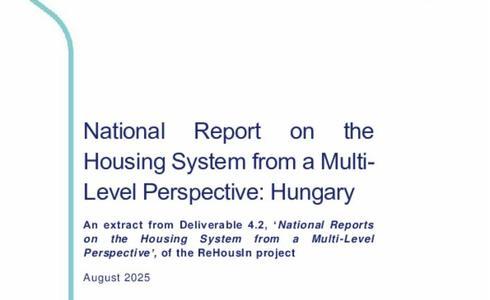National report on the housing system from a multi-level perspective: Hungary
An extract from Deliverable 4.2 “National reports on the housing system from a multi-level perspective”
Hungary's housing system underwent major transformation after the end of its socialist era, shifting from a strongly decommodified model towards a market-driven structure. Widespread privatisation and the collapse of state-led construction left behind a minimal public rental sector and a heavily commodified homeownership model, without a robust housing finance system. By 2001, municipal housing served only 2–3% of the population, typically the most vulnerable, A strong private rental sector failed to develop due to political and policy barriers. From 2008 to 2015, the government focused on the fallout from the foreign currency crisis that resulted from poorly regulated credit markets, placing heavy burdens on both banks and borrowers.
Post-2015 period saw ad-hoc policies, such as utility cost subsidies, VAT cuts and subsidised loans aimed at supporting families and ownership. Housing policy has been increasingly characterised by “helicopter-style” cash transfer schemes - ad hoc financial giveaways driven by political, economic, and construction industry interests, which can be viewed as partial decommodification measures. While such transfers may temporarily reduce commodification through state support, they primarily benefit households already able to save or invest, reinforcing inequalities while placing a considerable burden on the public budget. By 2022, reduced subsidies signalled recommodification again.

Publication date:
Languages: English